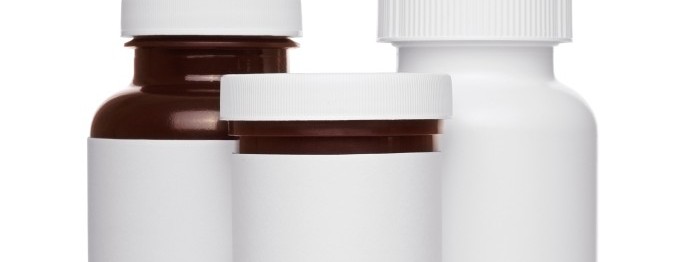A trio of new drugs in development for MS
Three new Gilenya spin-offs are currently in development to treat relapsing-remitting (RRMS) and secondary-progressive MS (SPMS), but preliminary results suggest that they may not offer much advantage over their predecessor.
Gilenya (fingolimod) is an oral medication approved for RRMS about six years ago. It works by blocking the S1P (for sphingosine-1 phosphate) receptor on immune cells. As part of their journey through the body, immune cells make “pit stops” in the lymph nodes. But to exit the lymph nodes, immune cells need a green light from S1P, which they detect with their S1P receptors. What Gilenya does is induce the S1P receptors on immune cells to shut down (called a functional antagonist effect), the immune cells don’t get S1P the signal, and so they remain trapped in the lymph nodes. This removes activated immune cells from the circulation, so they aren’t available to attack the body’s own tissues.
Blocking S1P receptors would seem to be a highly specific effect, however, more than one subtype exists (there are five, numbered 1 to 5) and S1P receptors are found throughout the body. Gilenya interacts with four of the five S1P receptors (all except 2), and this can produce a variety of unwanted side effects. Perhaps the most important is interaction with S1P receptors in heart tissue, which can slow the heart rate (called bradycardia). There is also a small risk of interference with the normal electrical signalling in the heart. This is why a 6-hour observation period is needed when starting Gilenya.
Since only one S1P receptor (S1P-1) was believed to be important for immune function, the thinking was that a cleaned-up version of Gilenya might be just as effective for MS while avoiding unwanted side effects. This has led to the development of three analogues of Gilenya.
The first is siponimod (formerly BAF-312), now in development by the manufacturers of Gilenya. It interacts with two receptors (S1P-1 and -5). In the phase II BOLD study of RRMS, siponimod reduced new MS lesions seen on MRI by 35-82%, depending on the dose (Selmaj and colleagues. Lancet Neurol 2013;12:756-767). Unfortunately, more specifically targeting the S1P-1 receptor didn’t eliminate the effects on the heart (Yagi and colleagues. Toxicol Appl Pharmacol 2014;281:39-34). So to have an impact in MS, an effect on the heart may be unavoidable since both are mediated by S1P. However, to minimize the early heart effect, dose titration (in which a low dose is gradually increased over a few days) is being tried. Siponimod is also revising its ambitions and is now being evaluated only in SPMS. The phase III EXPAND trial in SPMS has begun (Kappos and colleagues. ECTRIMS 2015; abstract P649) but no results are available yet.
Also in development is ozanimod (formerly RPC-1063), which also targets two S1P receptors (1 and 5). The results of the phase II/III RADIANCE trial have just been published (Cohen and colleagues. Lancet Neurol 2016; epublished February 12, 2016). As with siponimod, the dosing was titrated over an extended period (8 days for ozanimod, 6 days for siponimod). After six months, new inflammatory lesions on MRI were reduced 84-89% (depending on the dose) with ozanimod. This degree of lesion suppression appeared to be maintained at 18 months; the rate of relapses also declined but there didn’t appear to be any further improvement on MRI (Cohen and colleagues. ACTRIMS 2016; abstract LBA158). Ozanimod (either the drug or the way it was dosed) appeared to have minimal effects on the heart, but this needs to be validated in the phase III part of the RADIANCE trial. A second phase III trial, called SUNBEAM, will compare ozanimod to Avonex. Ozanimod is also being evaluated in the TOUCHSTONE study in people with ulcerative colitis.
Perhaps the most selective of the S1P drugs is ponesimod, which only interacts with S1P1. But there again, there is still an effect on heart function (Brossard and colleagues. Br J Clin Pharmacol 2013;76:888-896). A phase II trial found that different doses of the drug reduced MRI lesions by 43-83%, and there was a 52% reduction in the relapse rate (Olsson and colleagues. J Neurol Neurosurg Psychiatry 2014;85:1198-1208).
These results suggest that Gilenya spin-offs will be about as effective as Gilenya, but these medications won’t entirely avoid Gilenya-like heart effects – ostensibly the rationale for developing them in the first place. Their chief advantage will be that you can start with a lower dose so the body will have time to adjust. This was a strategy that may well have worked with Gilenya, and which could have avoided the requirement of a 6-hour observation period. Back when Gilenya was being reviewed by the FDA, there was a recommendation to study a lower dose of the drug, but that hasn’t been done yet. One small study has looked at taking Gilenya every other day (so half of the usual dose), and the results suggested that a lower dose was less effective (Merlini and colleagues. ECTRIMS 2015; abstract P1083). No studies have looked at slowing increasing the dose of Gilenya to avoid first-dose effects on the heart.
It remains to be seen if a more selective S1P effect will mean fewer side effects overall with the newer medications in development. The other challenge will be cost: the new drugs are likely to become available in 2018-2020 – just as Gilenya goes off patent and a less expensive generic version hits the market.
Share this article
Facebook Twitter pin it! Email
Related Posts
Back





